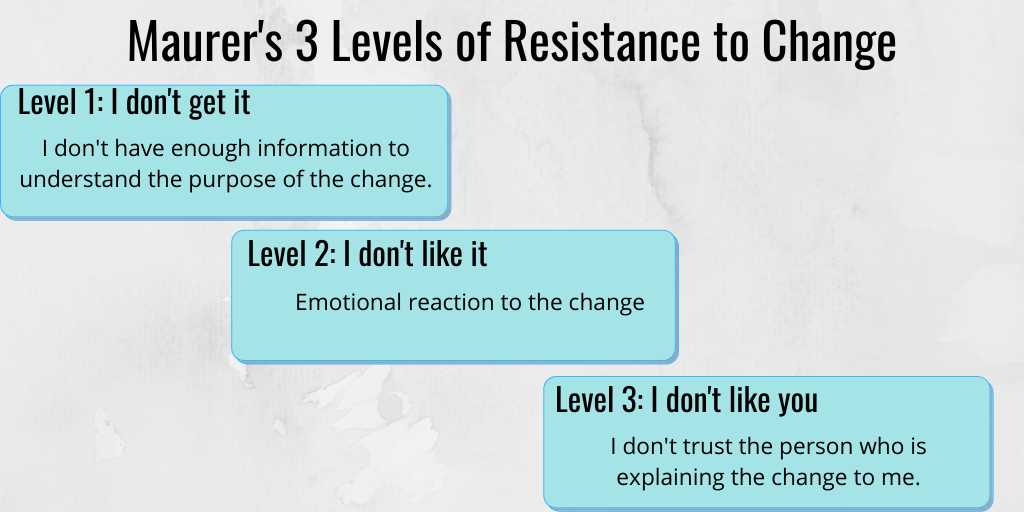Create a change management plan with these 5 key building blocks

Creating a change management plan is a lot like preparing to build a house: You can’t construct a sturdy structure without first creating a blueprint, and you won’t make much headway if you don’t have a system to monitor the progress or inspect the finished project.
In 2018, we held a webinar with change management experts at Acquis Consulting Group, during which we covered best practices and key components needed in every change management plan. Today, we’re updating this post to expand on the five building blocks by providing advice on how you can start laying the foundation for change in your organization.
What Is Change Management?
Change management is the planning and execution behind moving a person, team, or entire organization from their current state to a new or future state.
Change management done well can facilitate a variety of positive outcomes, such as increased productivity and faster ROI, by ensuring that everyone affected by the change knows what to expect and understands what is required of them to succeed. Conversely, not implementing a change management strategy can result in wasted resources, low adoption by employees and leaders, and more.
Why Change Management Is Important:

Caption: Acquis Consulting Group’s explanation of why change management is important
If you are initiating change in your organization, consider yourself the foreman, and think of your supportive internal leadership as the construction crew. Together, you can use these five key building blocks to construct a strong change management plan.
Key Building Blocks for Every Change Management Plan
- Strategy
- Planning
- Communication
- Training
- Measuring Success
1. Change Management Strategy
Your change management strategy is like the blueprint for your house. This is where you design the change you hope to make.
Start by discussing an overall strategy for how change management will be carried out in your organization:
- What will be changing?
- Why is the change necessary?
- Who are the key stakeholders involved?
- How does the change affect stakeholders?
- When will the change begin?
- How long will the change process take?
Even if you think you know the answers to these questions, force yourself to answer them in detail. When you see everything on paper, you might decide to move a few things around, adjust your goals or timeline, or come up with new ideas to support the initiative.
Let’s say you’re changing your vendor invoicing process. Initially, you might plan to fully transition all outside law firms to LEDES file invoices over the course of two months. However, after taking a look at all of the stakeholders involved and their fee agreements, you may realize that four months is a more realistic goal.
Spending more time on your change management strategy also helps highlight potential obstacles. For instance, while planning the switch to LEDES file invoices, you might discover that 30% of your vendors are using legacy solutions that are not LEDES format compatible. If you discover that issue early on, you can work user onboarding, software training, and additional support into your change management plan.
2. Change Management Plan
Change management planning is the foundation of your house. Strong change planning ensures that your initiative is built on solid ground.
Consider a legal team that is planning to implement a panel vendor program. Key stakeholders to involve in the process might include the general counsel, the legal operations team, the in-house lawyers, the vendors and outside law firms, and the people responsible for legal tech.
Some of the changes to address could include how the team plans to interview and select vendors for the program and use their legal technology to enforce compliance. To help discuss and communicate these changes, the team could map out a timeline of the key communications, decisions, and meetings that need to happen.
Sample Change Management Plan:

Caption: Sample change management plan for implementing a panel vendor program.
3. Change Management Communication
You can’t start building without telling your team what needs to get done. Once you have your change management plan and strategy, it’s important to talk to everyone involved.
Change affects individuals and departments differently, so you’ll need to look at the transition from various points of view. Then, you can answer the “what’s in it for me” (WIIFM) questions for each person or group, such as:
- How will I benefit from the change?
- How will this make my work life easier/better?
- Why should I care about making this change?
When answering these questions, remember to focus on the person or department you are addressing. For preferred panels, the WIIFM for vendors might be a guaranteed amount of work per quarter. For your in-house team, the major benefit might be a 20% increase in alternative fee arrangements (AFAs).
Continuous, detailed communication is key. According to Rick Maurer’s three levels of resistance, lack of understanding and lack of trust or confidence are two major barriers to change.

Get ahead of Levels 1 and 3 by educating your leadership team first. Then, turn those leaders into champions for the change who can communicate the reason for the transformation with confidence.
4. Training
Have you ever tried to find a bathroom in someone’s home and opened up a closet door instead? Chances are, your hosts forgot to give you a house tour. Expecting people to adapt to a change without training is even more confusing than sending a guest to hunt down the bathroom without any directions.
Training can come in many forms. If you’re rolling out new outside counsel guidelines and e-Billing systems, instructions for your in-house team might live on a company wiki and be shared through group trainings. On the vendor side, your team may provide a walk-through of the e-Billing platform, along with instructional videos.
5. Measuring Success
Once you’ve built the house, it’s time for an inspection. Was it a smooth and effective transition, or will your future change management plans need some adjustments?
You can track your success through a legal technology solution, such as a legal operations management platform. With SimpleLegal, you can track both qualitative and quantitive metrics by defining what a successful transformation looks like for your internal and external teams.
If you’re moving to preferred panels and implementing billing guidelines, look closely at vendor surveys and metrics around legal spend on law firms in the panel program.

Soliciting feedback from your preferred panels through vendor surveys strengthens the partnership between vendors and legal ops. Metrics that show positive changes, such as increases in AFAs or shorter invoicing timelines, can help you monitor benefits for your internal team.
Change Happens. Will You Be Ready?
It’s impossible to avoid change. What’s important is to be ready with a strategic and detailed plan for communication and training to make sure change is handled successfully. While change is inevitable, suffering is optional.
To learn more about change management, request a demo to see how SimpleLegal’s platform can support your change efforts.

